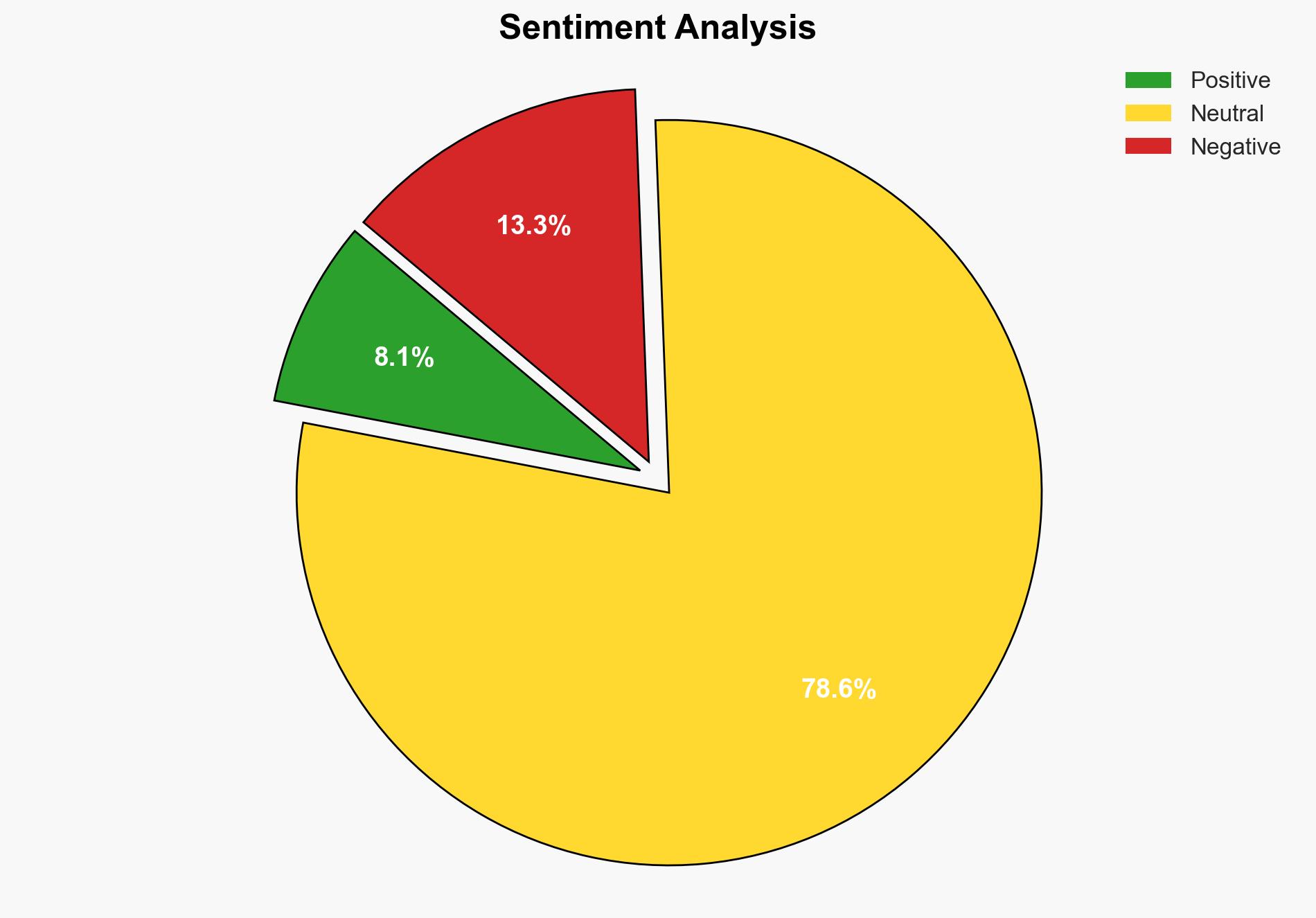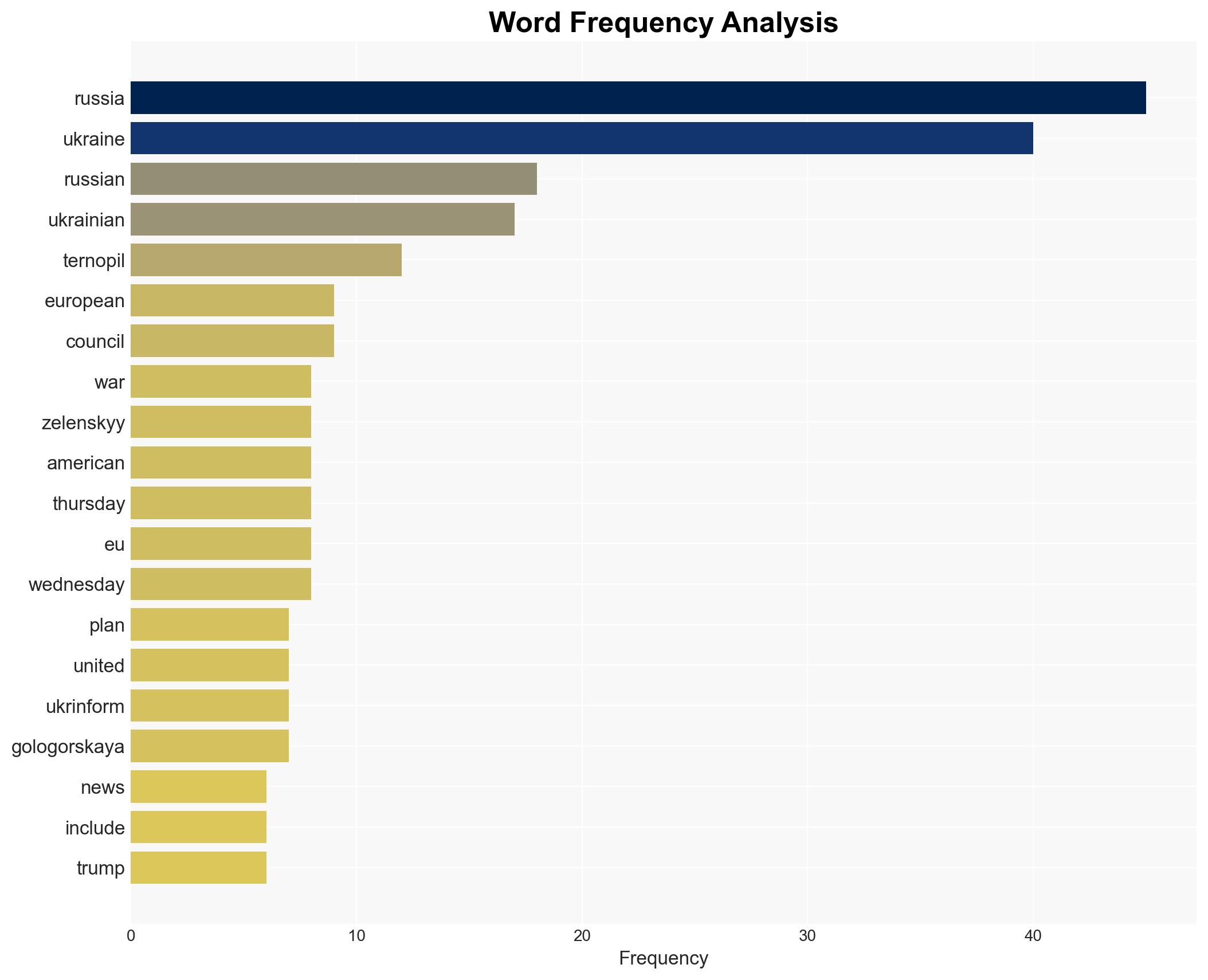Russia-Ukraine war List of key events day 1366 – Al Jazeera English
Published on: 2025-11-21
AI-powered OSINT brief from verified open sources. Automated NLP signal extraction with human verification. See our Methodology and Why WorldWideWatchers.
Intelligence Report:
1. BLUF (Bottom Line Up Front)
The most supported hypothesis is that the United States is actively pursuing a diplomatic resolution to the Russia-Ukraine conflict, potentially involving significant concessions to Russia. This is indicated by the involvement of high-level U.S. officials and the development of a draft plan. Confidence Level: Moderate. Recommended action includes monitoring diplomatic engagements closely, preparing for potential shifts in regional alliances, and assessing the impact of proposed concessions on Ukraine’s sovereignty and regional stability.
2. Competing Hypotheses
Hypothesis 1: The U.S. is genuinely working towards a diplomatic resolution to the conflict, potentially involving concessions to Russia to expedite peace. This is supported by the involvement of U.S. officials and reports of a draft plan that includes sanction relief for Russia.
Hypothesis 2: The U.S. diplomatic efforts are primarily a strategic maneuver to apply pressure on Russia and demonstrate international leadership, with no real intention of significant concessions. This could be a tactic to strengthen the U.S.’s position in negotiations and rally European allies.
3. Key Assumptions and Red Flags
Assumptions:
– The U.S. is acting in good faith to end the conflict.
– Russia is open to negotiations that could lead to a peaceful resolution.
– Ukraine will accept a plan that involves concessions to Russia.
Red Flags:
– Reports of Russian military aggression continuing despite diplomatic talks.
– Potential for misinformation or propaganda from involved parties to sway international opinion.
4. Implications and Strategic Risks
– Political: A diplomatic resolution involving concessions could weaken Ukraine’s sovereignty and embolden Russian aggression in other regions.
– Cyber: Increased cyber activities from Russia as leverage in negotiations.
– Economic: Sanction relief could bolster Russia’s economy, affecting global markets.
– Informational: Propaganda efforts from Russia to portray the negotiations as a victory.
5. Recommendations and Outlook
- Engage in multilateral discussions with European allies to ensure a unified approach to any proposed peace plan.
- Prepare contingency plans for potential escalation if negotiations fail or are used as a stalling tactic by Russia.
- Most-likely scenario: Continued diplomatic efforts with slow progress and potential minor concessions.
- Best scenario: Successful negotiation leading to a stable peace agreement without undermining Ukraine’s sovereignty.
- Worst scenario: Breakdown of talks leading to increased military aggression and regional instability.
6. Key Individuals and Entities
– Volodymyr Zelenskyy: Ukrainian President
– Daniel Driscoll: U.S. Secretary of the Army
– Mike Waltz: U.S. Ambassador to the UN
– Karoline Leavitt: White House Press Secretary
– Kaja Kallas: EU Foreign Policy Head
7. Thematic Tags
Regional Focus, Regional Focus: Eastern Europe, Russia, Ukraine, United States, European Union
Structured Analytic Techniques Applied
- Causal Layered Analysis (CLA): Analyze events across surface happenings, systems, worldviews, and myths.
- Cross-Impact Simulation: Model ripple effects across neighboring states, conflicts, or economic dependencies.
- Scenario Generation: Explore divergent futures under varying assumptions to identify plausible paths.
Explore more:
Regional Focus Briefs ·
Daily Summary ·
Support us





